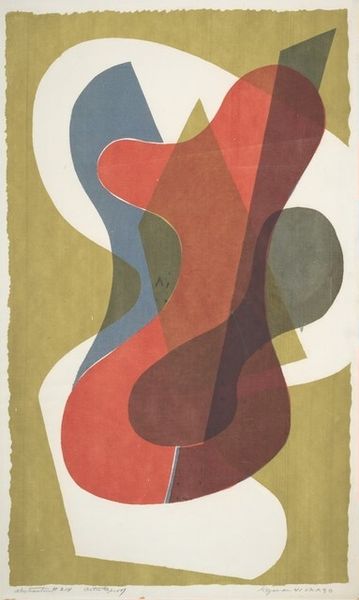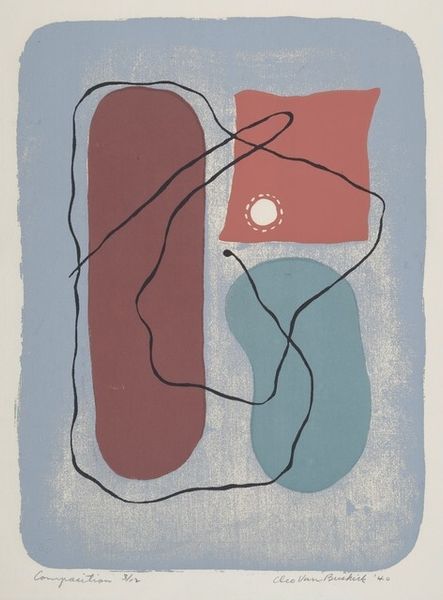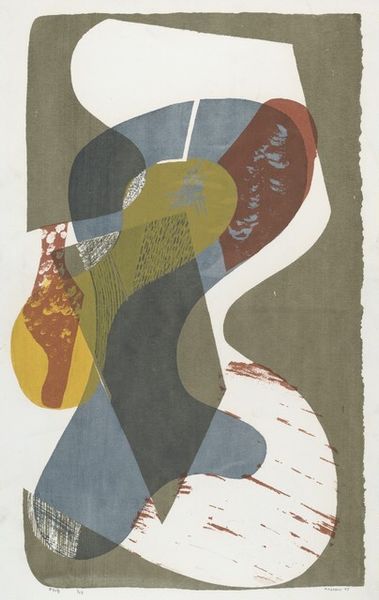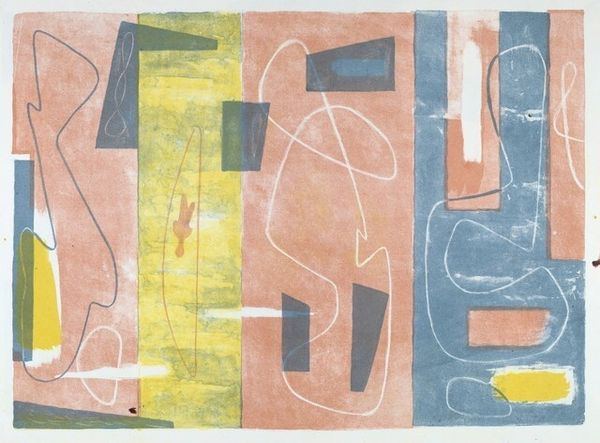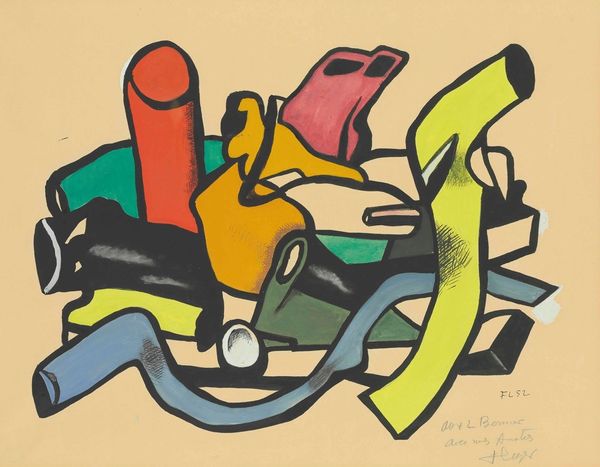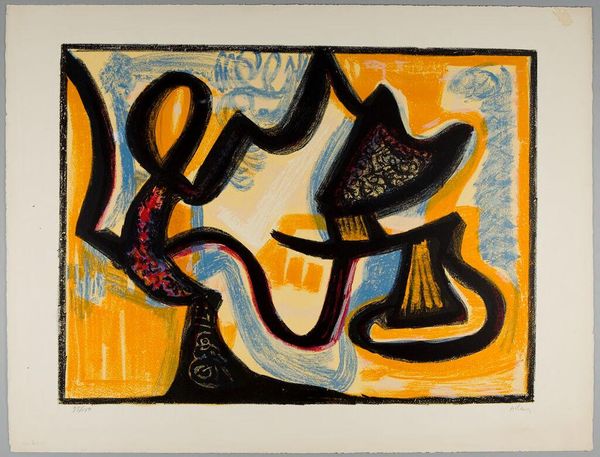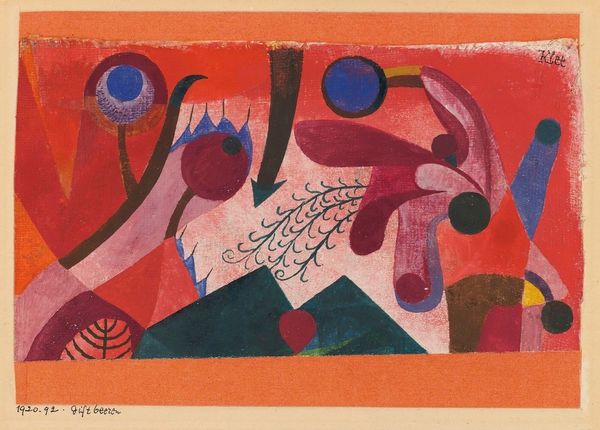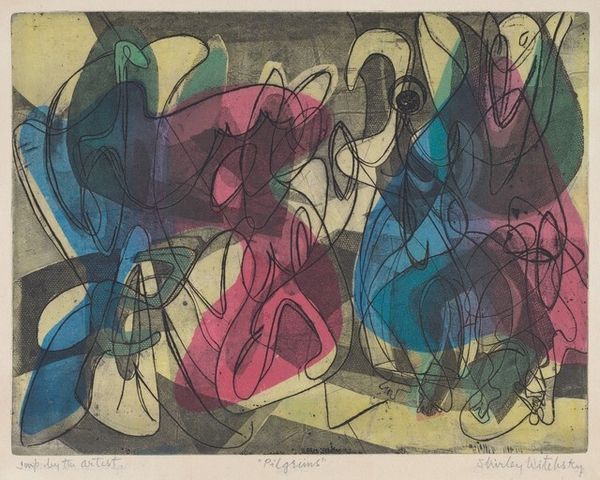
mixed-media, print
#
mixed-media
#
organic
# print
#
caricature
#
abstraction
#
line
#
modernism
Dimensions: sheet: 30.8 × 35.56 cm (12 1/8 × 14 in.)
Copyright: National Gallery of Art: CC0 1.0
Editor: This is "Departure," a mixed-media print by Edward Landon, created in 1942. I'm struck by its somewhat melancholy mood, created by the muted colors and abstract shapes, which make me think of simplified figures waving goodbye. What can you tell me about this piece? Curator: The context of 1942 is key. World War II was raging. Abstract art during this period often reflected anxieties and desires for escape, even symbolically. Given the title "Departure", how does this artwork play into or subvert traditional representations of leaving and separation, particularly in a time of war? Editor: Well, the abstract figures and soft color palette make the idea of departure less jarring, more of a quiet feeling. Instead of a specific, recognizable scene of wartime separation, Landon offers these floating, somewhat unsettling forms. It's emotional but also distanced. Curator: Exactly. It distances itself from direct representation, yet evokes universal feelings linked to wartime separations. Its organic abstraction, recalling biomorphic forms, was emerging at this time. It's part of a larger artistic shift—a search for new languages to express profound social shifts. Considering the title is "Departure," and given this artwork may have been for public consumption through museums or galleries, what kind of emotional impact may Landon have desired with its simplified abstraction and unique shapes? Editor: I think Landon tried to create an unsettling, unresolved sentiment to promote a time of unease as much as he reflected it. It refrains from specific imagery. But its display would certainly elicit conversations. It's made me rethink the different ways we process anxieties related to times of war through art. Curator: Precisely. The piece challenges us to think about how socio-political events shape art and its impact on the viewing public. The act of viewing then also becomes the final piece.
Comments
No comments
Be the first to comment and join the conversation on the ultimate creative platform.
